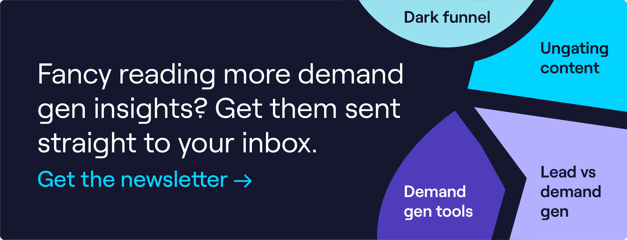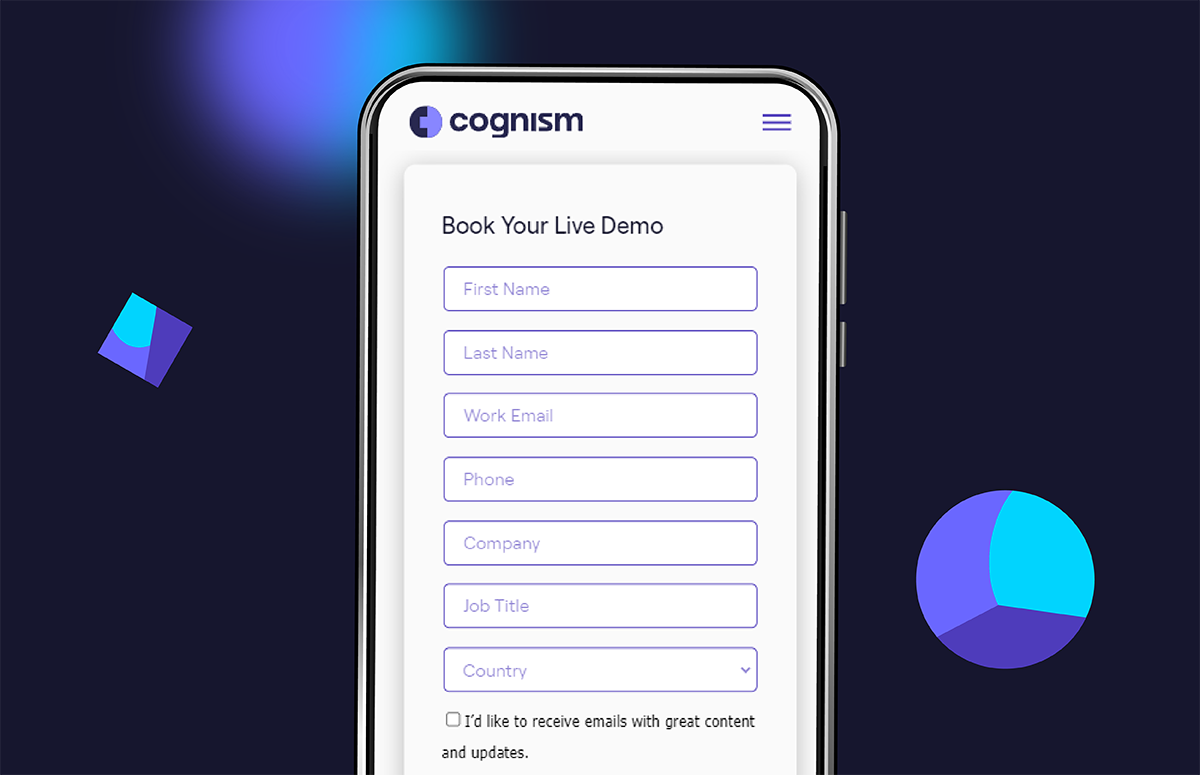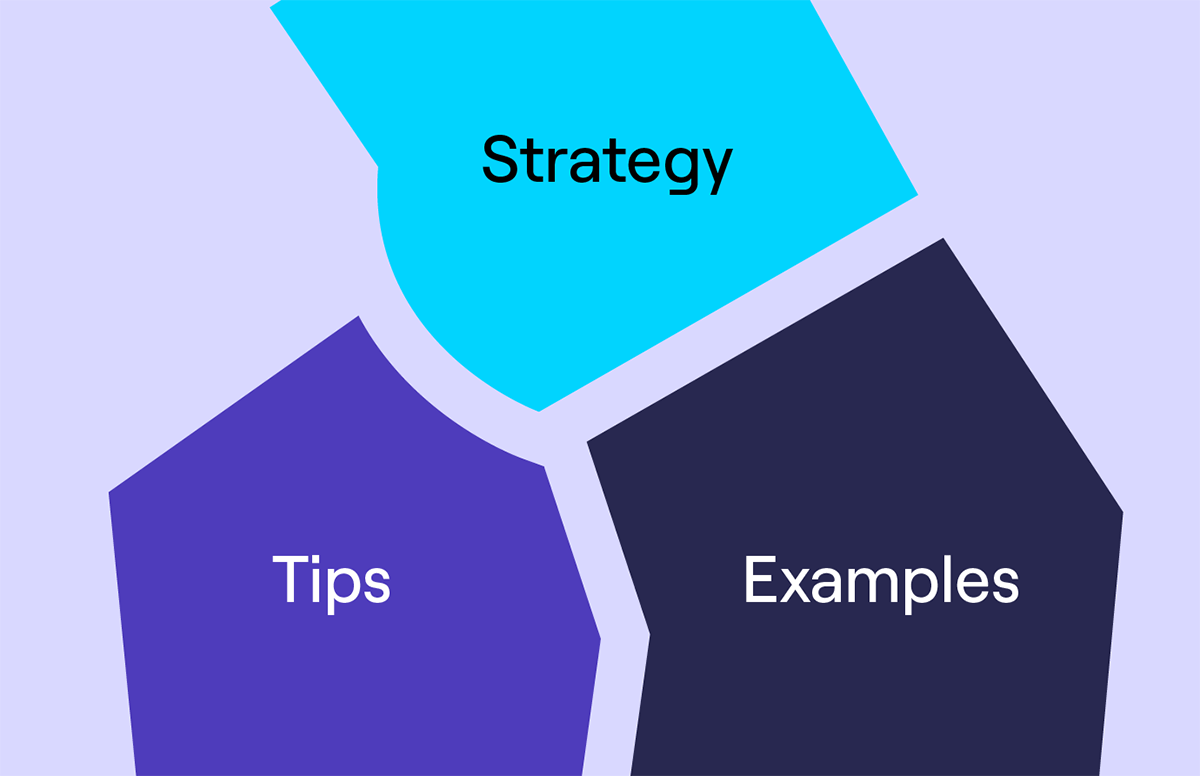How the Pod Model Workforce Helps You Hit Revenue Targets
“Just like peas in a pod!”
You should think about this when you’re working in B2B marketing. It can be your key to success 💯
Don’t believe us?
This article is based on a speech given by Fran Langham, Cognism’s Head of Enterprise Marketing, at B2B Marketing Expo 2021. She’ll tell you how the pod model helped her team hit 114% of their new revenue target by month 2 💥
So without much further ado, let’s get into it!
Flick through this article using the menu on the left-hand side.
See Fran's full speech from the Expo - press ▶️ to watch!
Background on the pod model: the Cognism perspective
Before we get into the nitty-gritty of it all, it’s worth giving some background on how the pod came about.
Fran said:
“Having successfully scaled up our SMB customer base, we wanted to unlock a new revenue stream, which was the mid-market space.”
This meant things had to move quickly.
Enter the pod model...
What’s the pod model?
You might be thinking:
“What on earth is the pod model? I’ve never heard of that before!”
In order to target a new vertical, Fran needed her content and campaign marketers to be in sync. This is the makeup of Cognism’s mid-market and enterprise pod:
Fran had some advice on putting your team together:
“When you’re looking at a new segment, I think hiring wouldn’t be good in the first instance. Because you need people that know the company well, so you can scale up fast.”
What’s the key takeaway here?
Don’t have complete strangers in your pod!
Because it’ll slow things down...tremendously 🙈
What are the benefits of the pod model?
Now you know what the pod model is, let’s dive into the advantages👇
Speed
There’s no time to waste in a fast-growing tech company.
That means everyone in the team has to be on the same page.
Fran said:
“It was about getting the right people working together on one shared goal. And working as a small team with a core focus ensures we can get things moving quickly.”
After all, teamwork makes the dream work.
But don’t be fooled.
The way to create a pod that’s #goals isn’t through focusing on long campaign lifecycles.
It’s about the “quick wins and experiments to see what works and what doesn’t”, Fran says.
That’s how you can create a pod with a need for speed 💨
High-quality work
It’s always a matter of quality over quantity.
It’s all well and good having a high output of content and campaigns. But if it’s not targeted and relevant, the whole demand generation process becomes a waste of time.
That’s where the magic of the pod model comes in 🪄
And it’s been a real game-changer for Fran’s team:
“Content planning and campaign planning go hand-in-hand, meaning we’re driving value in a joined-up way.”
Innovation
Your workflow can be experimental.
For Fran, the pod meant that different content and campaigns could be rapidly tested.
More autonomy
You’ve got the power with the pod model.
Fran mentions:
“We have the autonomy and the budget to test, test, and test!”
With the pod model, there’s far more flexibility.
And that means if one way of doing things doesn’t work, you can switch things up.
The ins and outs of the pod model
If we’ve convinced you to use the pod model, that’s great!
You’ve now got to get to grips with how you’re going to set up and work in your pod.
Now, this may seem daunting at first. But that’s why we’ve given you Cognism as an example 👇
How to work in the pod
Getting the right workflow can take a lot of trial and error.
But once you’ve got it down, it makes everything 10x easier.
Fran’s identified a few workplace habits that help the pod run smoothly:
Work in bi-weekly sprints
In Fran’s pod, the progress of work is reviewed every 2 weeks. And they use Monday.com to consolidate and update tasks in this sprint.
Work in a cross-functional way
In order to create relevant content and campaigns for MM-Ent, Fran’s pod has “a lot of contact with the outbound sales team.”
Work through regular pod meetings
Communication is key.
How else can you align on goals?
For Fran, there are 5 key meetings that help the pod run successfully:
- Weekly pod meeting.
- Bi-weekly pod sprint meeting.
- Bi-weekly sales meeting.
- Weekly 1-2-1 meetings between Fran and other pod members.
- Monthly revenue meeting.
What to track in the pod
Once you’ve got some workplace habits down, you need to think about what you’ll track in the pod.
Fran said:
“We’re very data-driven - it drives all of our decision-making.”
Data’s super important, because it supports the wider objectives of the pod model.
For Fran there were 2 main objectives:
- Set a revenue target and own it!
- Know where people are converting in the B2B sales funnel.
In order to achieve these objectives as quickly as possible, the pod tracks “granular metrics for every single campaign”.
“There’s a hyper-focus on tracking click-through rates and open rates.”
The bottom line is - it’s all about the data!
How to ramp from research to output (with the pod)
Identify the quick wins
The quick wins and the research phase go hand-in-hand.
“We wanted to get the leads to sales as soon as possible”, says Fran.
And that meant quickly seeing what’s hot, and what’s not.
For Fran’s team, it was about using existing tactics:
“Content leads is something we’ve been successful with SMB previously. I told the pod to work on strategic content, because that’s what had worked before.”
But as she soon found out, even your gut can be wrong sometimes…
“Strategic content didn’t work for us. And it was our more actionable content that was successful. It was less than $20 cost per lead.”
That’s the great thing about metrics - they never lie.
So never underestimate the power of data for your pod!
You don’t know what you don’t know
You never stop learning.
That means when it comes to research, you shouldn’t think that your job is done.
Because no one knows absolutely everything.
Here’s what Fran recommends you should do:
“Once you’ve got the leads to sales, you’ve got to review cold calls and customer calls. They’re absolute gold dust to help you figure out what your ICP wants, and what their pain points are.”
That’s how you can make sure your content and campaigns are relevant, to the max.
It all comes back to this:
Test! Test! Test!
REMEMBER! Your job doesn’t stop at getting the leads to sales.
Fran tells us why:
“We need to look and see if the leads from various channels are converting down the funnel. Because that’s where the revenue is.”
Once you’ve identified your weak spots, here’s what Fran recommends:
“Stop actions that aren’t working. Focus on the high-impact channels, and then reallocate the budget.”
What’s trendy?
This is the final piece of the research puzzle.
“It’s all about finding patterns within the marketing funnel. Pay attention to industry trends and increasing contacts in target accounts”, Fran says.
Keeping up with those trends can help you reach decisions quicker.
Again, it’s all in the data!
The pod model: key takeaways
Who knew there was so much information on the pod model?
If you need a little recap, here are the key points to takeaway.
The pod is a small working team that shares a common goal or focus.
Here are the main advantages of working in the pod (as a growth marketer):
- It’s efficient.
- It’s innovative.
- It’s autonomous.
- It allows for high-quality content.
Here are the healthy work habits to think about in the pod:
- Have regular meetings.
- Have a bi-weekly sprint.
- Have a cross-departmental approach.
Remember to place an emphasis on B2B data. It’s the best thing to help inform the decisions you make in the pod.
Finally, the pod helps you to constantly research and tailor your approach. So remember to:
- Identify those quick wins.
- Always assume you don’t know absolutely everything.
- Think about what’s fashionable.
And there you have it!
You’ve got the tools in your toolbox to create a stellar pod of your own!
Sign up for Cognism’s newsletters
Want more SaaS marketing and sales insights?
Every 2 weeks, we’ll deliver the best content, tips, tricks, hacks and quotes straight to your inbox.
Register for Cognism’s newsletters at the link below 👇



